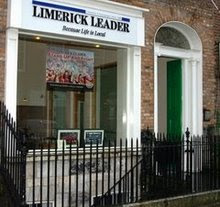
Fuss isn’t John Hayes’ thing; he takes the art of self-effacement to new levels - when Munster won the Heineken Cup in 2006 he dodged the celebrations and watched Declan Kidney’s players tour around Limerick from the comfort of his sitting room.
But Hayes will find fuss hard to avoid this week. Against England he equaled Malcolm O’Kelly’s Irish caps record (92) and he will surpass it against Scotland to become Ireland’s most-capped player in international rugby history.
Hayes has only missed 11 of Ireland’s last 103 international tests, if he plays against Wales in Cardiff he will surpass Fabien Pelous’ all-time record of 48 appearances in the Six Nations and he will draw level with Anthony Foley as the joint-record holder for most appearances in the Heineken Cup if he plays a part in the quarter-final clash with the Ospreys.
Then there’s the career highlights: helping Munster to Heineken Cup glory (twice), the Triple Crowns and Shannon’s string of All-Ireland League titles.
Only tells half the story
Such highlights however only tell half of the John Hayes story.
John was intrigued by rugby after watching the 1991 World Cup and a year later, at the age of 19 in September 1992, he played his first game in the back-row for Bruff against Newcastle West - a 0-0 draw.
Hayes had gingerly stepped onto a rugby field like a man easing himself into a canoe, but found he liked it.
Hayes played a handful of games for Bruff in ’92 before moving to the Shannon under-20s and under the nose of Niall O’Donovan who played a critical part in his development.
His next move was to play for Marist in Invercargill, New Zealand. The Kiwis transformed Hayes from a welder who played rugby into a rugby player who welded. Marist also moved him from the second row to prop forward - when the RFU decided to permit lifting in the line-out everything changed for the Cappamore man.
When he returned to Ireland Hayes slotted into the Shannon front-row and was soon packing down in the colours of Munster.
He helped the Parish to the 1998 AIL title and next thing he knew he was called into the Irish squad for the summer tour to South Africa, he was too green for the ’99 World Cup, but he made his debut for Ireland against Scotland the following year.
Unfair criticism
Like a gopher in the garden, the notion that John Hayes isn’t good at what he does, keeps popping its nose up out of the dirt. It’s a pesky rodent which requires a whack in the skull.
His critics suggest he is too tall to be a prop and that he can’t scrummage. To ask a player of John Hayes’ size to play at number three is asking for trouble and he has had his off days in rugby’s most demanding and most technical position - indeed the true horror of the scrum cannot be grasped by those who have never faced one. But a bulldozer wouldn’t budge John Hayes in a scrum now; you could take a lump hammer onto the field and not get anything off him. If, in May 2006, Hayes had not held his ground in a vital scrum against Biarritz in the Heineken Cup final Peter Stringer could not have stolen in to score his crucial try.
John Hayes can also run forever, he’s an awesome rucker, one of the best defensive props in the game and the best lineout lifter in the world - remember the 2008 Six Nations: against Italy at Lansdowne Road Paul O’Connell stole an Italian throw which led to Jerry Flannery’s try. The remarkable thing about that score is that John Hayes lifted O’Connell all by his lonesome.
Looking everyone in the eye
Questions used to follow John Hayes around, but now he can look everyone in the eye. He has been through the mill and come out with a high polish. If there’s one man Ireland can’t do without it’s John Hayes, he’s indispensable - God help Ireland if John Hayes twists a ankle out herding his 150 acres some evening.
A question is often asked about sporting prowess: how much is success down to perseverance as opposed to natural talent?
Since the same question can be asked of life in general, the answers might provide some clues as to how much of our destinies are in our own hands. More profound is the whole issue of whether we could have achieved more, if only we had tried harder. When you watch someone like Brian O’Driscoll perform brilliantly it’s actually reassuring to think that we could never have competed with them, but the argument doesn’t follow that we could not have competed at a high level.
Natural talent is just one ingredient of success and not always the most important one. In fact most sports feature notable examples of people like John Hayes whose hard work has enabled them to overachieve.
If effort and determination can separate the very good and exceptional, can it also make the difference between being mediocre and being able to compete at a high level?
It’s peculiar that some people often seem to rejoice (at least a little) when an average player fails to make the grade. It’s as if it confirms what perhaps many secretly fear: that our own failures are not down to what life has presented us with in terms of talent, but instead our inability to make the most of it.
At the launch of his rugby career John Hayes was known as the calf, then the bullock and now the bull.
That progression is a sporting example to us all.
Brian McDonnell




0 comments:
Post a Comment